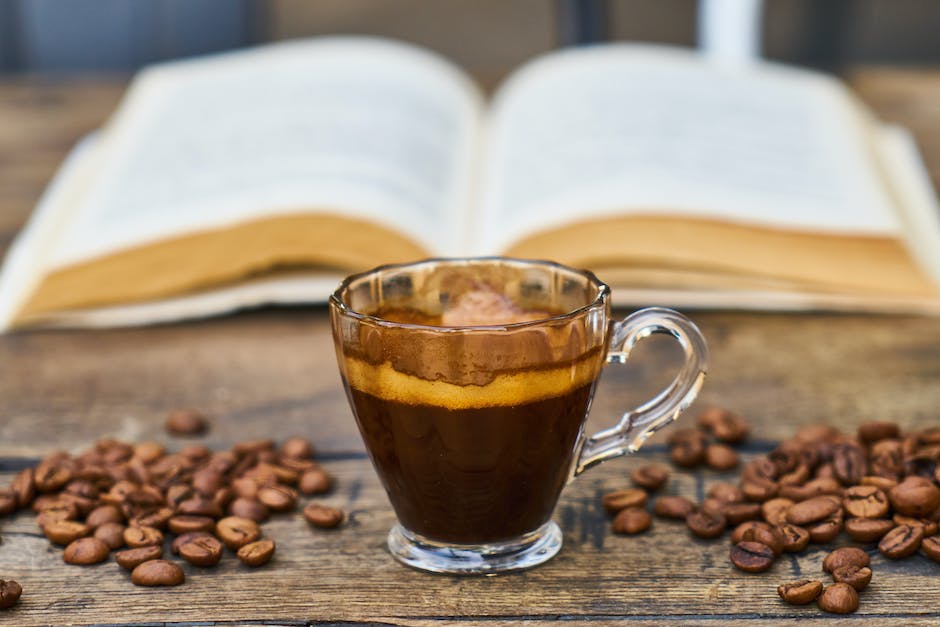-
Table of Contents
Introduction
When making coffee using a percolator, it is important to know when the coffee is done brewing to ensure that it is not over-extracted or under-extracted. In this article, we will discuss how to tell when coffee is done percolating and ready to be served.
Signs That Coffee Is Done Percolating
Coffee is a staple in many households, and percolators are a popular way to brew it. Percolators work by boiling water and cycling it through the coffee grounds until the desired strength is achieved. However, it can be challenging to know when the coffee is done percolating. In this article, we will discuss the signs that coffee is done percolating.
The first sign that coffee is done percolating is the sound. Percolators make a distinct sound when they are brewing coffee. The sound is a steady, rhythmic bubbling noise. As the coffee brews, the sound will become more pronounced. When the coffee is done percolating, the sound will slow down and eventually stop. This is a clear indication that the coffee is ready to be served.
Another sign that coffee is done percolating is the color. As the coffee brews, it will become darker in color. When the coffee is done percolating, it will be a rich, dark brown color. If the coffee is too light in color, it may not be strong enough. If the coffee is too dark, it may be too strong. The ideal color for coffee is a rich, dark brown.
The aroma of the coffee is also a sign that it is done percolating. As the coffee brews, it will release a strong, rich aroma. When the coffee is done percolating, the aroma will be at its strongest. If the aroma is weak, the coffee may not be strong enough. If the aroma is too strong, the coffee may be too strong. The ideal aroma for coffee is a strong, rich scent.
The taste of the coffee is the most important sign that it is done percolating. When the coffee is done percolating, it should have a rich, full-bodied flavor. If the coffee is too weak, it may not have enough flavor. If the coffee is too strong, it may be bitter. The ideal flavor for coffee is a rich, full-bodied taste.
It is important to note that the time it takes for coffee to percolate can vary depending on the type of percolator and the amount of coffee being brewed. It is best to follow the manufacturer’s instructions for brewing coffee in a percolator. However, the signs that coffee is done percolating remain the same regardless of the brewing time.
In conclusion, there are several signs that coffee is done percolating. The sound, color, aroma, and taste are all indicators that the coffee is ready to be served. It is important to pay attention to these signs to ensure that the coffee is brewed to perfection. With a little practice, anyone can become an expert at brewing coffee in a percolator.
How Long Should You Percolate Coffee?
Percolating coffee is a classic method of brewing coffee that has been around for decades. It involves boiling water and allowing it to pass through coffee grounds repeatedly until the desired strength is achieved. However, one of the most common questions that coffee lovers ask is how long they should percolate their coffee. In this article, we will explore the factors that determine how long coffee should be percolated and how to tell when it is done.
The first factor to consider when percolating coffee is the type of coffee maker being used. Different coffee makers have different brewing times, and this can affect how long the coffee should be percolated. For example, stovetop percolators typically take longer to brew coffee than electric percolators. Therefore, if you are using a stovetop percolator, you may need to percolate your coffee for a longer period than if you were using an electric percolator.
Another factor to consider is the type of coffee being used. Different types of coffee have different brewing times, and this can affect how long the coffee should be percolated. For example, dark roast coffee typically takes longer to brew than light roast coffee. Therefore, if you are using dark roast coffee, you may need to percolate your coffee for a longer period than if you were using light roast coffee.
The strength of the coffee is also a factor to consider when percolating coffee. If you prefer strong coffee, you may need to percolate your coffee for a longer period than if you prefer weaker coffee. However, it is important to note that percolating coffee for too long can result in over-extraction, which can make the coffee taste bitter.
So, how do you tell when coffee is done percolating? One way to tell is by listening to the percolator. As the water boils and passes through the coffee grounds, it will make a bubbling sound. When the bubbling sound starts to slow down or stop, it is a sign that the coffee is done percolating. However, this method may not be accurate for all types of percolators.
Another way to tell when coffee is done percolating is by checking the color of the coffee. As the water passes through the coffee grounds, it will become darker in color. When the coffee reaches the desired strength, it will have a rich, dark color. However, it is important to note that the color of the coffee may not be a reliable indicator of when it is done percolating, as it can vary depending on the type of coffee being used.
A more accurate way to tell when coffee is done percolating is by using a timer. Most coffee makers come with a timer that can be set to the desired brewing time. Once the timer goes off, the coffee is done percolating. However, it is important to note that the brewing time may need to be adjusted depending on the type of coffee being used and the desired strength of the coffee.
In conclusion, how long coffee should be percolated depends on several factors, including the type of coffee maker being used, the type of coffee being used, and the desired strength of the coffee. To tell when coffee is done percolating, you can listen to the percolator, check the color of the coffee, or use a timer. However, it is important to note that these methods may not be accurate for all types of
Tips for Perfectly Percolated Coffee
Percolated coffee is a classic brewing method that has been around for over a century. It involves boiling water and passing it through coffee grounds repeatedly until the desired strength is achieved. However, getting the perfect cup of percolated coffee can be a bit tricky, especially if you’re not sure when the coffee is done percolating. In this article, we’ll share some tips on how to tell when your coffee is ready.
Firstly, it’s important to understand how percolators work. Percolators have a chamber at the bottom where water is heated to boiling point. The water then rises up a tube and is dispersed over the coffee grounds in a basket. The brewed coffee then drips back down into the chamber, and the process repeats until the desired strength is achieved.
One way to tell when your coffee is done percolating is by listening to the sound it makes. As the water boils and rises up the tube, it creates a gurgling sound. This sound will become more pronounced as the coffee gets stronger. When the gurgling sound starts to slow down or becomes less frequent, it’s a sign that the coffee is almost done. At this point, you can start checking the color of the coffee to see if it’s to your liking.
Another way to tell when your coffee is done percolating is by checking the color of the coffee. As the coffee gets stronger, it will become darker in color. When the coffee is a rich, dark brown color, it’s a sign that it’s almost done. However, it’s important not to let the coffee get too dark, as this can result in a bitter taste.
A third way to tell when your coffee is done percolating is by checking the temperature of the coffee. Percolators typically brew coffee at a higher temperature than other brewing methods, so it’s important to let the coffee cool down a bit before tasting it. Once the coffee has cooled down, take a sip and see if it’s to your liking. If it’s too weak, you can let it percolate for a bit longer. If it’s too strong, you can add some hot water to dilute it.
It’s also important to note that the brewing time for percolated coffee can vary depending on the type of coffee you’re using and the strength you prefer. As a general rule, it’s best to start with a shorter brewing time and gradually increase it until you find the perfect strength for your taste.
In conclusion, percolated coffee is a classic brewing method that can produce a delicious cup of coffee when done correctly. To tell when your coffee is done percolating, listen for the gurgling sound, check the color of the coffee, and check the temperature of the coffee. With a bit of practice, you’ll be able to brew the perfect cup of percolated coffee every time.
The Importance of Water Temperature in Percolating Coffee
Percolating coffee is a classic brewing method that has been around for over a century. It involves boiling water that is forced through coffee grounds, creating a rich and flavorful cup of coffee. However, to achieve the perfect cup of percolated coffee, it is essential to pay attention to the water temperature. In this article, we will discuss the importance of water temperature in percolating coffee and how to tell when coffee is done percolating.
Water temperature is crucial in percolating coffee because it affects the extraction of flavor from the coffee grounds. If the water is too hot, it can over-extract the coffee, resulting in a bitter taste. On the other hand, if the water is too cold, it can under-extract the coffee, resulting in a weak and flavorless cup. The ideal water temperature for percolating coffee is between 195°F and 205°F.
To achieve the perfect water temperature, it is recommended to use a thermometer to measure the water temperature. Start by boiling water in a kettle or pot, and then let it cool for a few minutes until it reaches the ideal temperature range. Alternatively, you can use a coffee maker with a built-in thermometer to ensure that the water temperature is accurate.
Once you have achieved the ideal water temperature, it is time to start percolating the coffee. Add the coffee grounds to the percolator basket, and then pour the hot water over the grounds. As the water boils, it will be forced through the coffee grounds, extracting the flavor and aroma.
To tell when the coffee is done percolating, you can use your senses. First, listen for the percolating sound. As the water boils, it will create a bubbling sound that gradually slows down as the coffee is brewed. When the sound stops, it is a good indication that the coffee is done.
Next, look at the color of the coffee. As the water passes through the coffee grounds, it will extract the color and flavor. The coffee should have a rich, dark color when it is done percolating. If the color is too light, it may need more time to brew.
Finally, smell the coffee. The aroma of freshly brewed coffee is unmistakable. When the coffee is done percolating, it should have a strong and pleasant aroma. If the aroma is weak or unpleasant, it may be an indication that the coffee is under-extracted or over-extracted.
In conclusion, water temperature is a crucial factor in percolating coffee. To achieve the perfect cup of percolated coffee, it is essential to use water that is between 195°F and 205°F. Additionally, it is important to pay attention to the percolating sound, color, and aroma to tell when the coffee is done. With these tips, you can enjoy a rich and flavorful cup of percolated coffee every time.
How to Adjust Percolator Settings for Different Coffee Types
Percolators are a classic way to brew coffee, and they have been around for over a century. They work by boiling water and forcing it through coffee grounds, creating a rich and flavorful cup of coffee. However, percolators can be tricky to use, especially if you are not familiar with the brewing process. One of the most important things to know is how to tell when coffee is done percolating. In this article, we will discuss how to adjust percolator settings for different coffee types, and how to know when your coffee is ready.
First, let’s talk about the different types of coffee that you can brew in a percolator. Percolators are great for brewing strong, bold coffee, but they are not ideal for delicate or light roasts. If you prefer a milder coffee, you may want to consider using a drip coffee maker instead. However, if you enjoy a robust cup of coffee, a percolator is a great choice.
When brewing coffee in a percolator, it is important to adjust the settings based on the type of coffee you are using. For example, if you are using a dark roast coffee, you may want to use a coarser grind and a longer brewing time. This will help to extract the full flavor of the coffee without making it too bitter. On the other hand, if you are using a medium roast coffee, you may want to use a finer grind and a shorter brewing time. This will help to bring out the subtle flavors of the coffee without making it too weak.
To adjust the settings on your percolator, start by filling the bottom chamber with cold water. Then, add the coffee grounds to the basket and place it on top of the water chamber. Next, adjust the heat setting based on the type of coffee you are using. If you are using a dark roast coffee, you may want to use a lower heat setting to avoid over-extracting the coffee. If you are using a medium roast coffee, you may want to use a higher heat setting to ensure that the coffee is fully extracted.
Once you have adjusted the settings, it is time to start brewing. As the water heats up, it will begin to percolate through the coffee grounds. You will hear a bubbling sound as the water boils and moves through the coffee. This is a good sign that your coffee is brewing properly. However, it is important to keep an eye on the percolator to ensure that the coffee does not over-brew.
One way to tell when coffee is done percolating is to watch the color of the coffee as it brews. As the coffee percolates, it will become darker and richer in color. Once the coffee has reached your desired strength, you can turn off the heat and remove the percolator from the stove. It is important to remove the coffee basket from the percolator as soon as possible to prevent over-extraction.
Another way to tell when coffee is done percolating is to use a timer. Most percolators come with a built-in timer that will let you know when the coffee is ready. Simply set the timer for the desired brewing time and wait for it to go off. Once the timer goes off, you can turn off the heat and remove the percolator from the stove.
In conclusion, brewing coffee in a percolator can be a great way to enjoy a rich and flavorful cup of coffee.
Conclusion
To tell when coffee is done percolating, you can listen for a consistent bubbling sound and watch for the color of the coffee to turn a rich brown. Additionally, you can check the coffee’s strength by tasting it periodically. Once the coffee has reached your desired strength and color, it is ready to be served. Overall, paying attention to the sound, color, and taste of the coffee is key to determining when it is done percolating.





